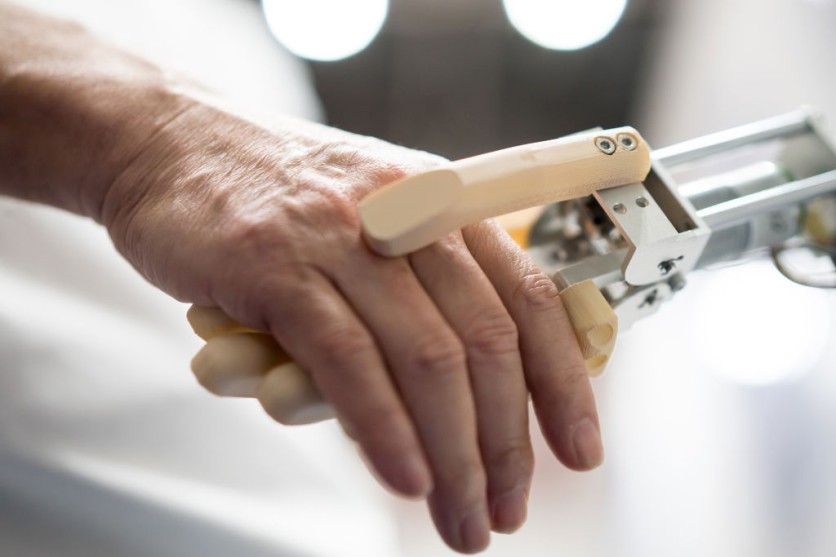Chinese scientists have developed a major breakthrough in the development of electronic skin (e-skin), creating a three-dimensional (3D) architected sensor that mimics the sensory functions of human skin with unprecedented accuracy.
Led by Professor Zhang Yihui from Tsinghua University, this technology holds immense potential for applications in robotics, healthcare, and beyond.
How the Electronic Skin Works
The newly developed e-skin is designed to decode and sense three critical mechanical signals: pressure, friction, and strain. This capability allows it to monitor real-time health data and provides a pathway for the creation of more human-like robots with enhanced tactile perception.
"This e-skin is a novel type of sensor that can be applied directly to the skin like a band-aid, offering continuous health monitoring," explained Professor Zhang.
Chinese newspaper Xinhua reports that the e-skin's intricate 3D spatial distribution of sensors, inspired by the structure of human skin, includes the epidermis, dermis, and subcutaneous tissue, enabling it to accurately perceive external stimuli.
A patch of this e-skin, roughly the size of an index fingertip, houses 240 metal sensors, each measuring between two and three hundred micrometers. These sensors are densely arranged to emulate the tactile receptor cells in human skin, ensuring precise detection of pressure, friction, and strain.
The study detailing this development was recently published in the journal Science.
Read Also : This Remotely-Controlled Robot Can Revolutionize Underwater Missions With 'Fin-Tastic' Features

TOKYO, JAPAN - OCTOBER 19: An attendee shakes hands with a robotic arm during the Japan Robot Week 2022 event on October 19, 2022 in Tokyo, Japan. The event showcases service robots and robot manufacturing technology and will be held from October 19 to 21.
Human-like Robot Skin
One of the most significant challenges in e-skin development has been the simultaneous decoding of multiple mechanical signals.
The Chinese team's breakthrough lies in their biomimetic approach, replicating the hierarchical structure of human skin.
This allows multiple sensors to work in tandem, collecting signals that are then refined through deep learning algorithms. As a result, the e-skin can accurately identify the softness, hardness, and shape of objects with a pressure position perception resolution of approximately 0.1 millimeters, rivaling the sensitivity of human skin.
TechXplore reports that all the layers combined are only about 25 to 50 microns thin.
Breakthrough E-skin Technology
The potential applications of this technology are far-reaching. In the medical field, the e-skin could be integrated into the fingertips of medical robots for early diagnosis and treatment. Additionally, it can be worn as a band-aid to monitor vital health data such as blood oxygen levels and heart rate in real time.
In robotics, the e-skin empowers robots with a human-like sense of touch, enabling more nuanced interaction with their environment by being able to detect temperature and texture. This technology also holds promise for improving prosthetic systems by providing users with sensory feedback, enhancing their quality of life.
While previous electronic skins have been developed, Professor Zhang's team emphasizes that their innovation surpasses existing technologies in several key areas.
The combination of biomimetic design and advanced deep learning techniques allows for unparalleled accuracy in signal processing and interpretation.
This enables the e-skin to not only mimic the sensory feedback of real skin but also to surpass it in certain aspects, paving the way for a new generation of robots and medical devices.
Stay posted here at Tech Times.


![Apple Watch Series 10 [GPS 42mm]](https://d.techtimes.com/en/full/453899/apple-watch-series-10-gps-42mm.jpg?w=184&h=103&f=9fb3c2ea2db928c663d1d2eadbcb3e52)


